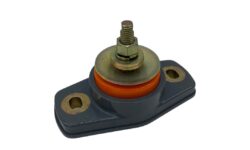What are Rod To Tape Couplings & Their Uses
Rod to tape couplings are electrical fittings that are used to connect two different types of grounding conductors – copper-clad steel (CCS) rods and copper tapes. The coupling consists of a threaded brass rod with a pointed tip on one end and a threaded brass nut on the other end. The copper tape is typically clamped to the coupling with a bolt and nut.
The primary use of the Rod To Tape Couplings is in grounding and earthing systems, where they help to create a low-impedance connection between the grounding conductor and the earth. Grounding systems are designed to protect electrical equipment and personnel from electrical shocks and fires by providing a safe path for current to flow to the earth.
Uses of Rod To Tape Coupling
Rod to tape couplings are used in a variety of grounding and earthing applications, including:
Lightning protection systems: Rod to tape couplings are used to connect the grounding conductor to the earth in lightning protection systems. These systems are designed to protect buildings and other structures from lightning strikes by providing a low-impedance path for the lightning current to flow to the earth.
Telecommunications: They are used in telecommunications systems to provide a low-impedance path for fault currents to flow to the earth. This helps to protect sensitive electronic equipment from damage and prevent the risk of electrical shock to personnel.
Power distribution systems: These tape couplings are used in power distribution systems to connect the grounding conductor to the earth. This helps to protect the equipment and personnel from electrical shocks and fires caused by fault currents.
Overall, rod to tape couplings are an essential component of grounding and earthing systems. By providing a low-impedance connection between the grounding conductor and the earth, these couplings help to protect electrical equipment and personnel from electrical hazards. They are commonly used in a variety of applications, including lightning protection systems, telecommunications, and power distribution systems.



